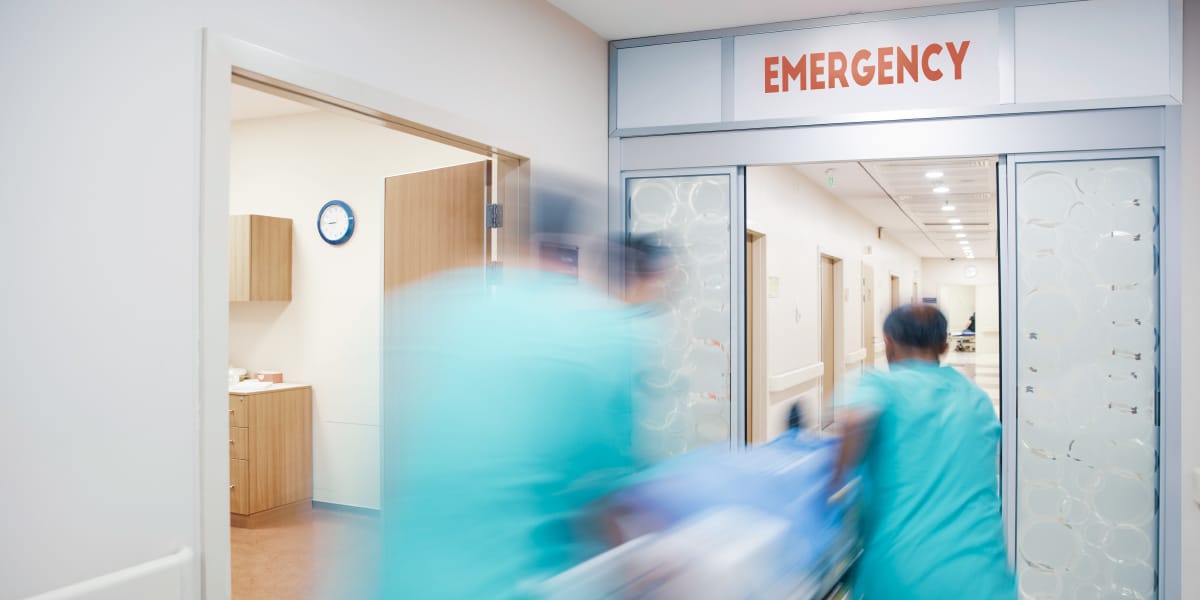Amid rising demand for health care in America and increased strain on medical providers, more patients are turning to emergency departments for care — even in non-emergency situations. This causes emergency department (ED) utilization to dramatically escalate, creating problems for both patients and healthcare providers. ED optimization can mitigate these negative impacts.
What Is Emergency Department Utilization?
ED utilization is a number that expresses how efficiently an emergency department is running. Medical providers use the health of the surrounding population to predict the rate at which the community will use the local emergency department and compare it to the rate at which it’s actually being used. This gives them an “observed-to-expected” utilization ratio, which expresses whether they’ve had more, less, or the same number of visits as anticipated.
They then multiply this ratio by the number of emergency visits they’ve had across health plans to see how they compare to the national average for ED utilization.
Misuse of Emergency Department Services
According to the CDC, emergency visits have risen across all demographics and coverage levels for at least two decades, with many seeking primary care services in emergency departments due to convenience, fast access to specialty medical services, and the perception of higher-quality care. BlueCross BlueShield reported seeing members visit the ED more than 20 times in one year for such reasons.
Primary care-related emergency visits can be classified as visits for medical situations that did not require treatment within 12 hours and could reasonably have been handled in a primary care setting. Unfortunately, the misuse of emergency department services decreases ED efficiency and jeopardizes the quality and affordability of American healthcare.
- Billions of dollars are wasted annually on preventable emergency visits
- Roughly 13% to 27% of emergency visits in the US could be handled in primary care offices and urgent care clinics
The emergency department is the only department in the US healthcare system that offers full, on-demand 24/7 medical services for health problems of any severity, without regard for the patient’s ability to pay. Emergency departments have a legal obligation to treat each person who comes to them for care, and for this reason, emergency departments are vulnerable to misuse.
Why Is High ED Utilization Problematic?
Overuse of emergency services not only comes at a high expense to the healthcare system and its patients, but it can also indicate poor care management, low-quality medical presence in the community, or a complete lack of healthcare options. Perhaps the worst consequence of high ED utilization is more crowded EDs, which make it harder for healthcare professionals to treat the more pressing emergencies in a timely manner.
What Is Being Done to Prevent ED Misuse?
According to the New England Healthcare Institute, medical providers are working to improve access to primary care by making non-emergency facilities more accessible, incentivizing the use of primary care over emergency care, and leveraging technology to improve the patient experience.
Thankfully, we live in a time in which technology is solving many long-standing issues in the medical field and beyond. Emergency departments have begun to use software and other technology that makes it easier for providers to manage chronic disease cases and to communicate and coordinate patient care more seamlessly. Digital tools even allow them to identify and address the patients with high rates of utilization with ease and offer reporting capabilities.
How Can Optimization in the Emergency Department Help?
Hospital electronic health records (EHRs) often do not provide a complete picture of a patient’s medical history, making it difficult for care providers to make an informed clinical assessment. Consequently, this puts the most vulnerable patients with the most complex healthcare needs at risk.
To help fill the gaps and be able to treat patients with the urgency required, ED clinicians need additional information to provide a more complete patient profile or at minimum, present the most relevant, up-to-date and critical information that can support immediate care or ensure patient and staff safety levels.
Real-time data at the point of care, can help clinicians make faster, more informed care decisions and accelerate triage and care delivery processes.







